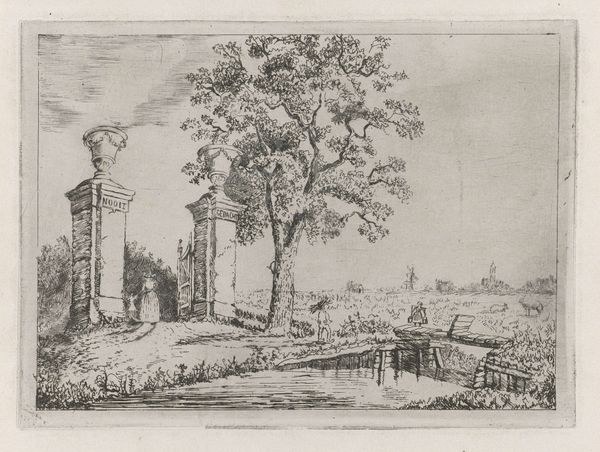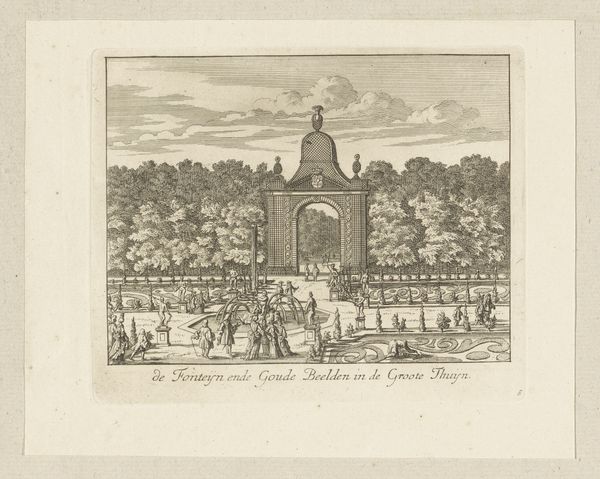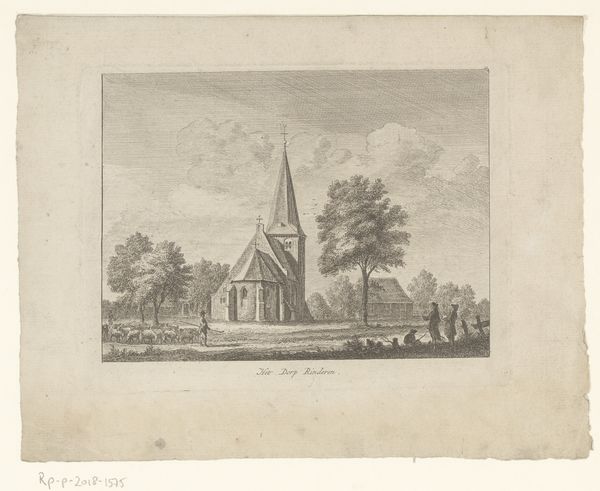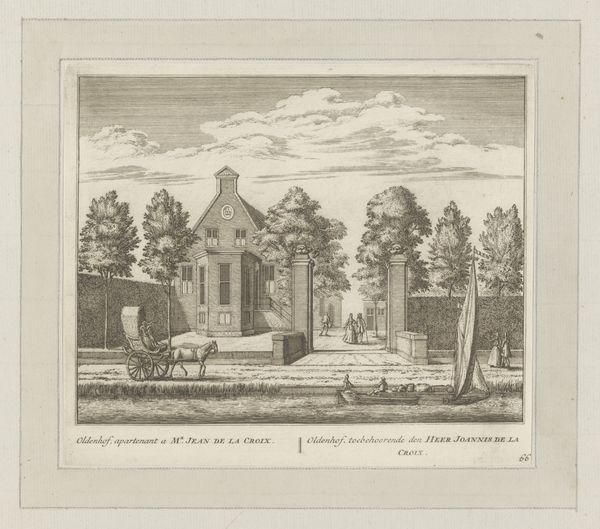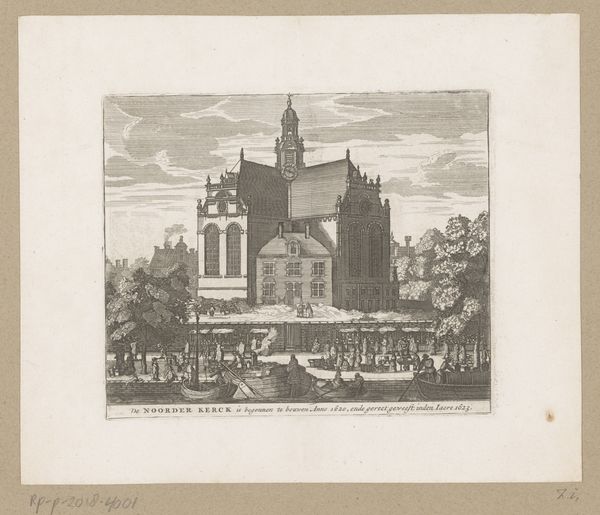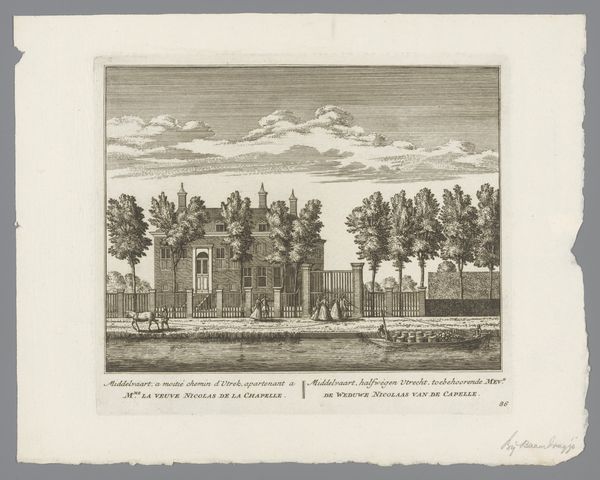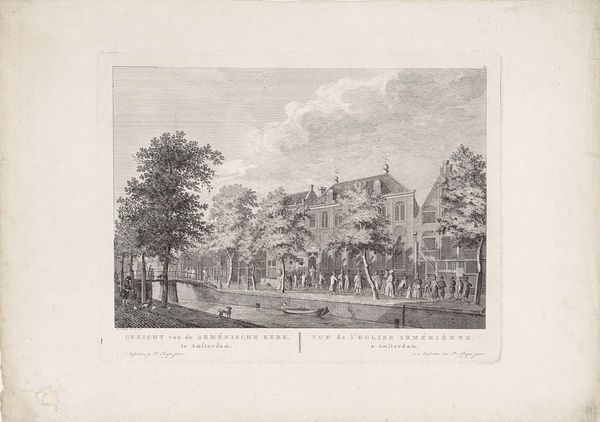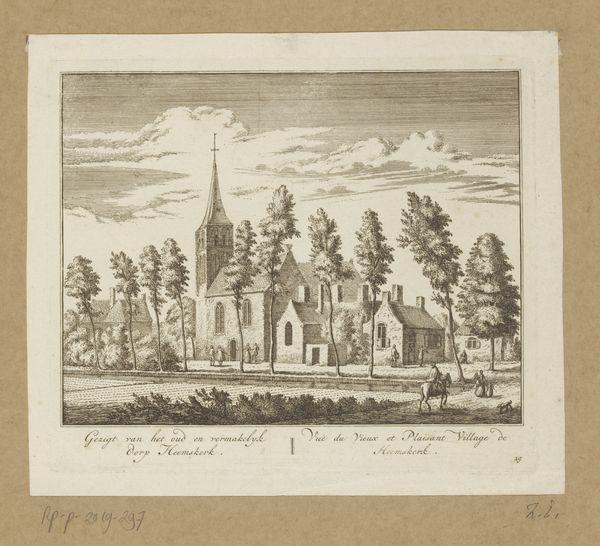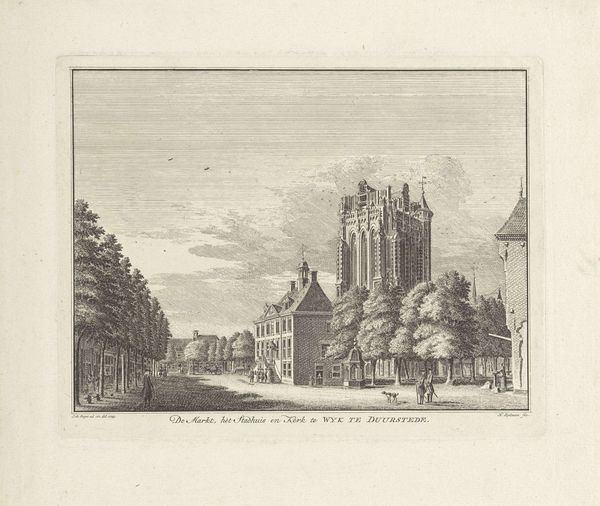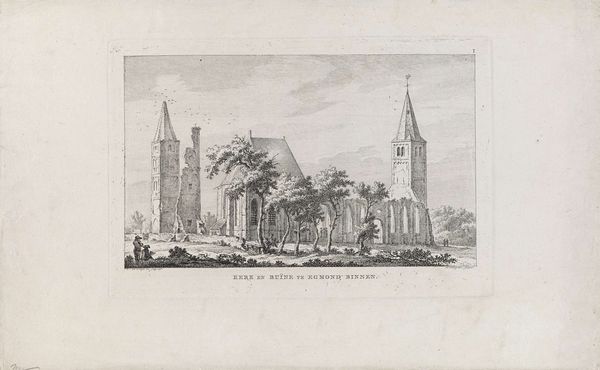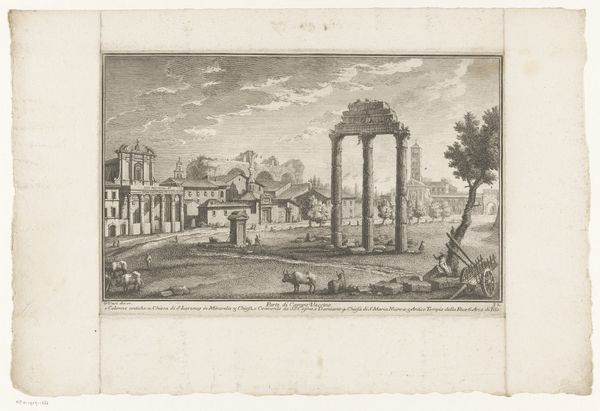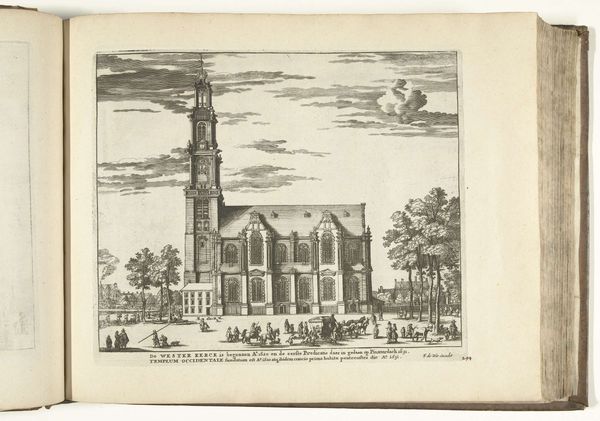
print, engraving
# print
#
old engraving style
#
landscape
#
cityscape
#
history-painting
#
engraving
#
realism
Dimensions: height 154 mm, width 213 mm
Copyright: Rijks Museum: Open Domain
Curator: Let's examine this engraving by Willem Writs, titled "Kerk en Rechthuis te Hilversum na de brand van 1766," created, unsurprisingly, in 1766. It depicts the aftermath of a fire in Hilversum. Editor: The scene strikes me immediately as desolate, yet curiously ordered. The architectural remnants create a powerful geometry, softened slightly by the delicate rendering of the trees. But there is an inherent sorrow emanating from it. Curator: Observe the interplay of line and texture, crucial elements within the image's structure. Writs uses precise lines to delineate the ruined forms, juxtaposing the solidity of the remaining structures against the ephemeral smoke rising in the background. Note the expert deployment of light and shadow, creating a detailed texture in monochromatic space. Editor: But this isn’t just about aesthetic interplay, is it? The engraving, in my view, serves as a stark document of the very real devastation suffered by this community. The prominent display of figures amongst the rubble serves as a visceral connection to the victims and invites reflection on the profound impact of disaster on their lives and the socio-political dynamics that defined rebuilding processes. Curator: Of course, and the engraving medium itself reinforces that function. Printmaking allowed for broader dissemination, serving potentially as a historical record and moralizing emblem of civic tragedy. The composition—the balance between destruction and human resilience—becomes a form of visual rhetoric. Editor: I also wonder, what statement does it make on institutional failures to protect vulnerable populations and, perhaps, prompt scrutiny of contemporary power structures through a veiled critique by documenting and disseminating imagery of the event, since these institutions - the Church and the Courthouse were literally up in flames. What can we read into that semiotically? Curator: A perfectly reasonable line of thought. Considering form alone though, I'm drawn back to the composition, the calculated arrangement of the ruined buildings within the pictorial plane creates an unsettlingly symmetrical effect...it really enhances that feeling of desolation we noticed initially. Editor: For me, it’s a narrative beyond the purely aesthetic. Writs provides us a window into a past, demanding that we do more than passively observe but engage actively with what led to these scenes and the subsequent historical events they imply. Curator: A powerful testament to the intersection of form and historical context. Editor: Indeed.
Comments
No comments
Be the first to comment and join the conversation on the ultimate creative platform.
